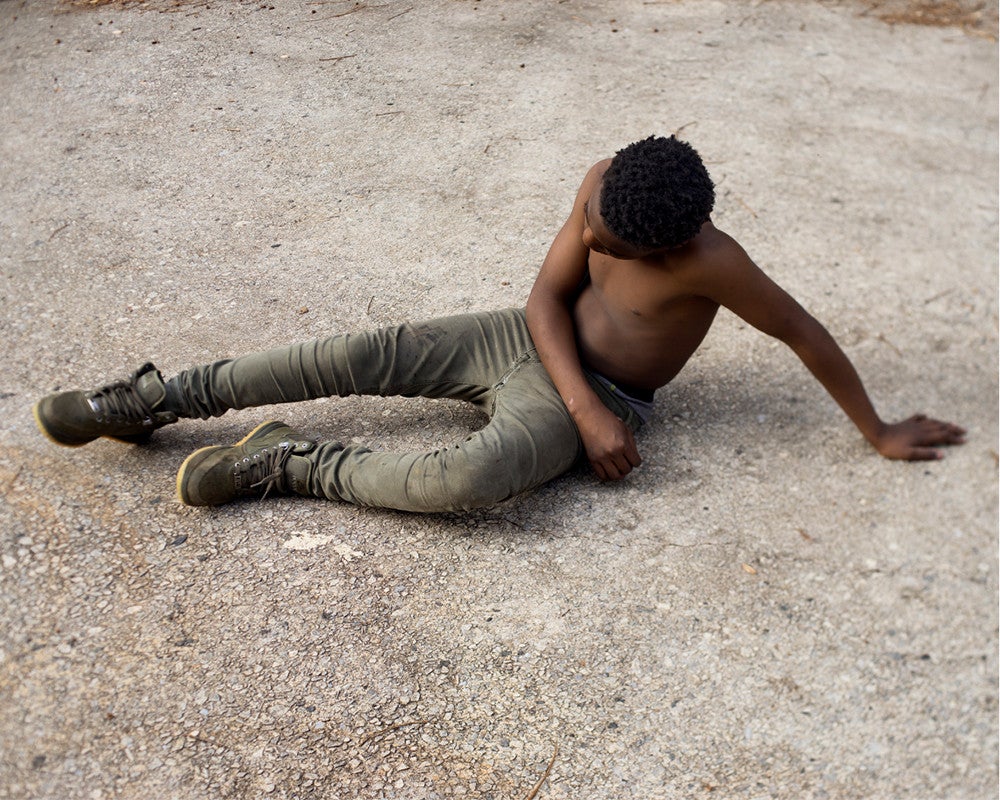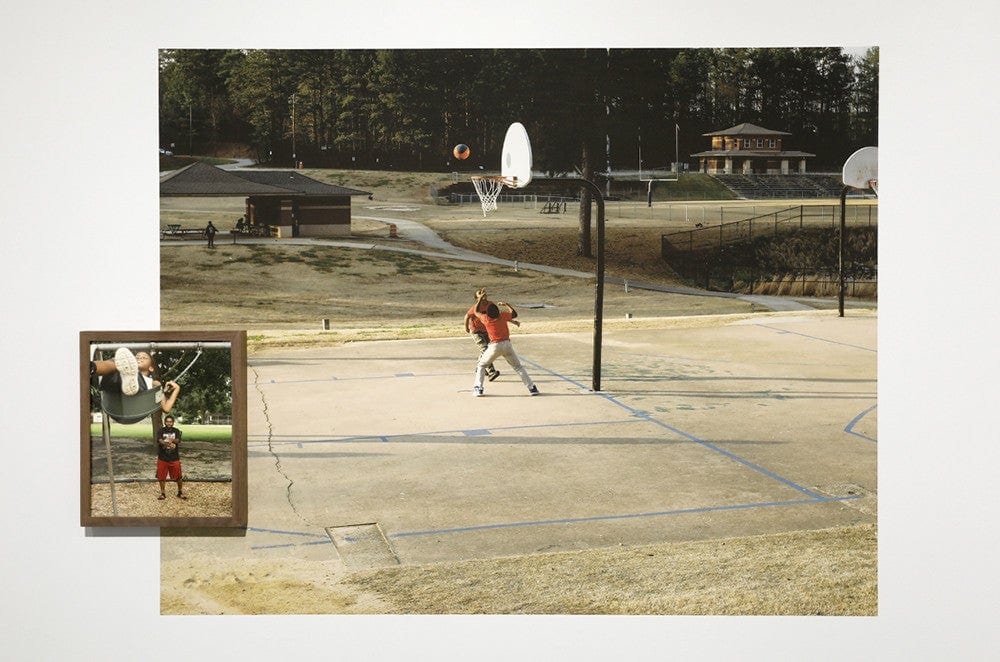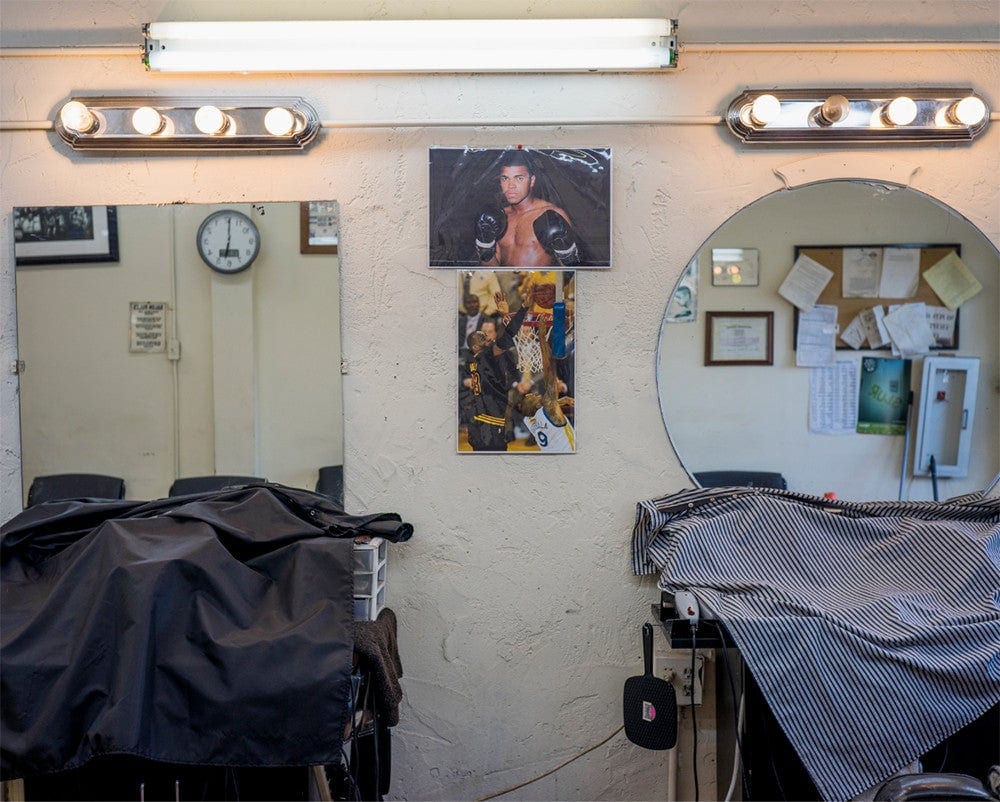
Black, Like Paul is a provocative title in that it immediately provokes inquiry. Who is Paul? In what ways does Paul embody Blackness? What does it mean to be Black, as Paul is Black? These fundamental questions go unanswered in this small exhibition of Alex Christopher Williams’s photography. Instead, beautiful and compelling images installed in innovative, multidimensional ways collapse over a vague conceptual foundation.
The exhibition title, Black, Like Paul, makes direct reference John Howard Griffin’s Black Like Me. The 1961 book follows a white journalist who darkens his skin to travel the segregated South. This body of work hangs on the given statement: “Growing up as a mixed-race boy, Williams was never forced to consider what his life would be like had he looked more like his father.” What this sentence and the exhibition title insinuate is that the artist is embarking on a visual exploration of what his life might be like were he more “visibly” Black. To risk more assumptions, I am stating that the artist is exploring what his life may have been like if he had darker skin. By reducing the Blackness of Paul—and therefore, himself—to the visible evidence of his darker skin, the artist is, whether intentionally or unintentionally, reducing Blackness to what is visibly discernible instead of being something intrinsic to Paul’s identity and conception of self. This squarely places the structural and social dangers of racism on dark skin.
This reading is supported by the photographs. Through the collection of rich images, Williams provides what appear to be slices of Black life. One photograph features a set of empty barber stations centered by a poster of Muhammad Ali, with the counters covered in an assumed assortment of clippers and tools hidden beneath nylon capes. This voyeuristic image evokes the intimate and in-between moments of common Black experiences within a Black barbershop. Images are paired and installed in ways that play up the complex layering of identity. A large phototec print of young Black boys playing basketball on an empty court is interrupted by a framed image of a Black man pushing a young boy on a swing. There are also portraits of young Black boys posing shirtless in what appears to be the vast lushness of Atlanta’s landscape. These Black figures that Williams depict are not defined by name—all of the works in the exhibition are untitled. This does the work of stripping the subjects of individuality and autonomy, reducing them to the one-dimensional representation of their skin tone. As fabricated by the artist, these images are a production of an imagined Blackness that he claims to not have access to. In the given context, these types of images harken back to anthropological images of Black bodies used to highlight the ways in which Black people are supposedly not only different but less human.

This, in turn, furthers the distance between the artist and his subject matter. Just as John Howard Griffin’s voyeuristic trip into Blackness left much to interrogate, so does this exhibition. The lack of text leaves viewers to read into their own assumptions about the figures presented. What appear to be autobiographical images of the artist and, presumably, his father Paul are featured throughout the exhibition, though it cannot be stated for sure. Assuming that these images are the artist and his father, they are never presented without each other, as if to authenticate the Blackness of the artist. In each of these photos the artist is very young, ranging from an infant to a young boy. He appears to present these younger versions of himself in juxtaposition with the unnamed Black boys in the other images. There are no contemporary images of the artist included in the exhibition. Instead, there is a framed letter—again, its veracity is unclear—that mimics a D.N.A. test in which the results of the subject’s genealogy are found inconclusive. To further illustrate this, the letter features a breakdown of percentages with unidentified ethnicities attached to them. This could be read as a disembodied portrait of the artist, an image shaped by his inconclusive understanding of his own racial identity.

There is a major disconnect between what the work does and what we are told it is meant to do. Allowing so much space for assumptions and misreadings, this exhibition raises questions it is not prepared to fully explore. The conceptualization of Blackness eclipses any tackling of folklore or masculinity that may be subtly explored in the photographs. Pursuing extremely personal and complex interrogations of racial identity, the exhibition hinges on the viewer’s knowledge of the artist’s identity, and yet both his voice and his image are absent. The exhibition is more interesting if viewed as an exploration of the artist’s relation to Blackness and his struggle to fully invest in his identity. It’s not really about Paul at all.
Alex Christopher Williams’s solo exhibition Black, Like Paul is on view at the Gallery | WISH through Friday, June 28.




